Fortinet NSE 7 - SD-WAN 7.2 Questions and Answers
What does enabling theexchange-interface-ipsetting enable FortiGate devices to exchange?
Refer to the Exhibits:
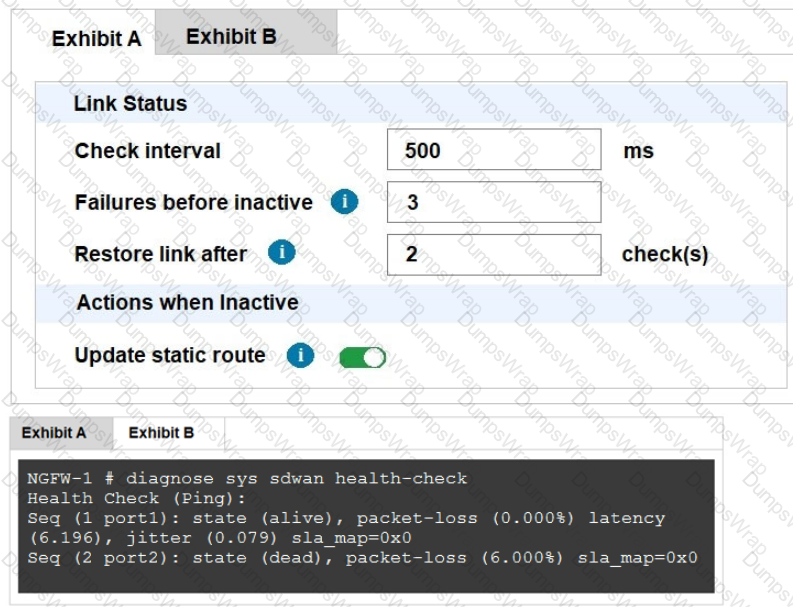
Exhibit A, which shows the SD-WAN performance SLA and exhibit B shows the health of the participating SD-WAN members.
Based on the exhibits, which statement is correct?
Refer to the exhibits.
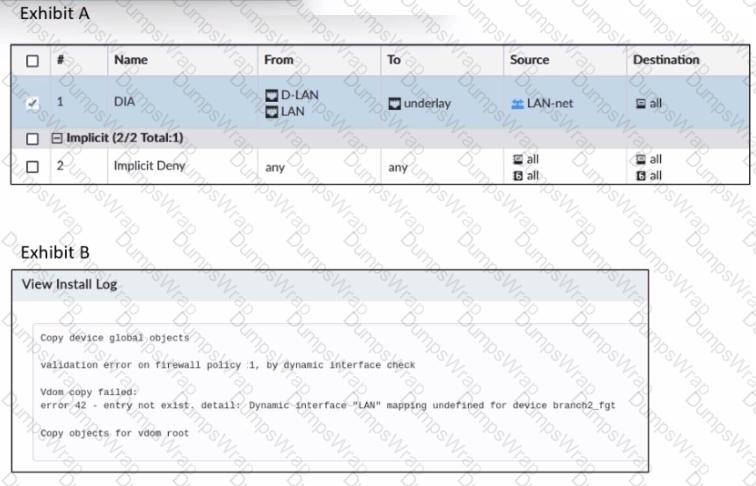
Exhibit A shows a policy package definition Exhibit B shows the install log that the administrator received when he tried to install the policy package on FortiGate devices.
Based on the output shown in the exhibits, what can the administrator do to solve the Issue?
Which two statements about the SD-WAN zone configuration are true? (Choose two.)
Which three matching traffic criteria are available in SD-WAN rules? (Choose three.)
Which diagnostic command can you use to show the SD-WAN rules, interface information, and state?
diagnose sys sdwan service
diagnose sys sdwan route-tag-list
diagnose sys sdwan member
Which two statements about SLA targets and SD-WAN rules are true? (Choose two.)
Which best describes the SD-WAN traffic shaping mode that bases itself on a percentage of available bandwidth?
What is the route-tag setting in an SD-WAN rule used for?
Refer to the exhibit.
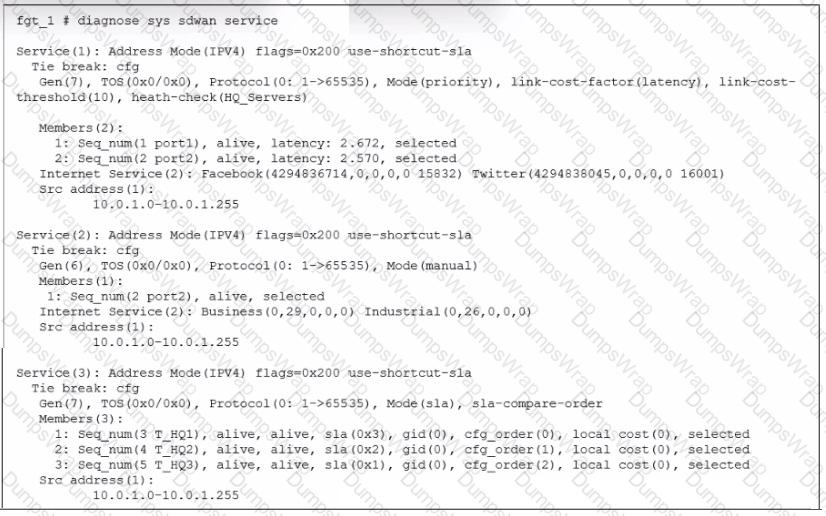
The exhibit shows output of the command diagnose 3vg sdwan service collected on a FortiGate device.
The administrator wants to know through which interface FortiGate will steer the traffic from local users on subnet 10.0.1.0/255.255.255.192 and with a destination of the business application Salesforce located on HO servers 10.0.0.1.
Based on the exhibits, which two statements are correct? (Choose two.)
Refer to the exhibit, which shows an SD-WAN zone configuration on the FortiGate GUI.
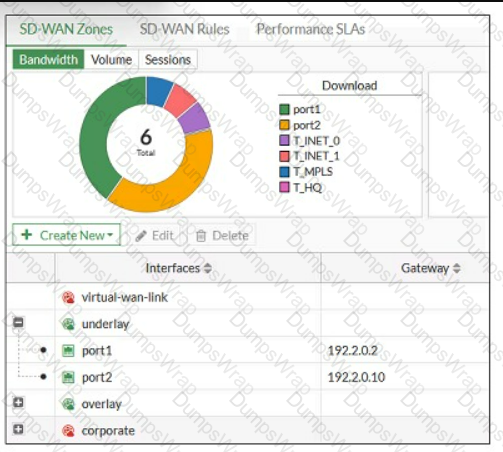
Based on the exhibit, which statement is true?
Refer to the exhibit.
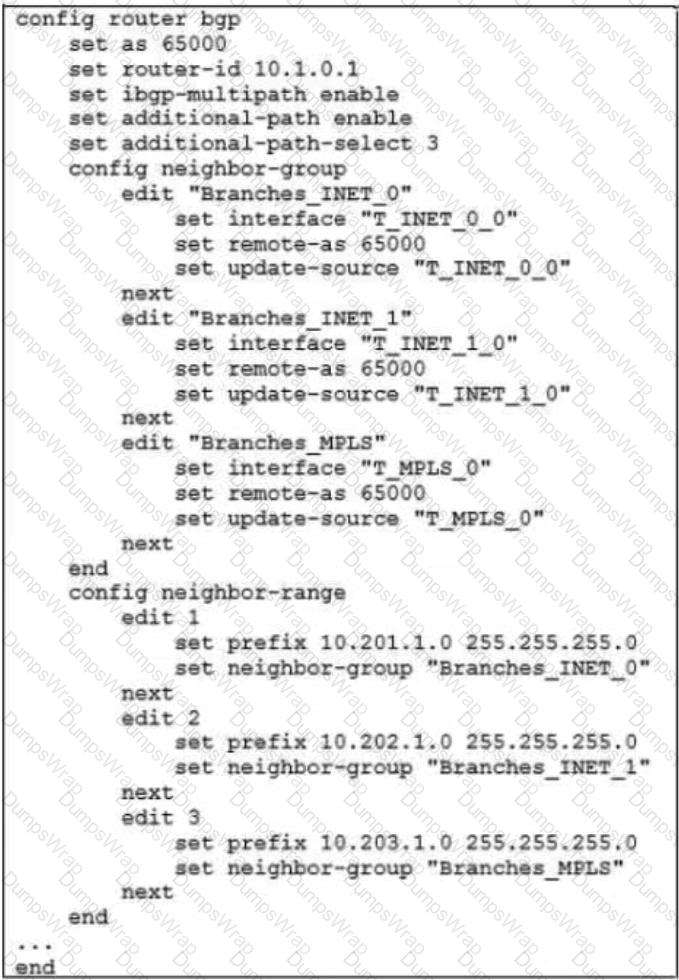
The exhibit shows the BGP configuration on the hub in a hub-and-spoke topology. The administrator wants BGP to advertise prefixes from spokes to other spokes over the IPsec overlays, including additional paths. However, when looking at the spoke routing table, the administrator does not see the prefixes from other spokes and the additional paths.
Based on the exhibit, which three settings must the administrator configure inside each BGP neighbor group so spokes can learn other spokes prefixes and their additional paths? (Choose three.)
Which two settings can you configure to speed up routing convergence in BGP? (Choose two.)
Refer to the exhibit.
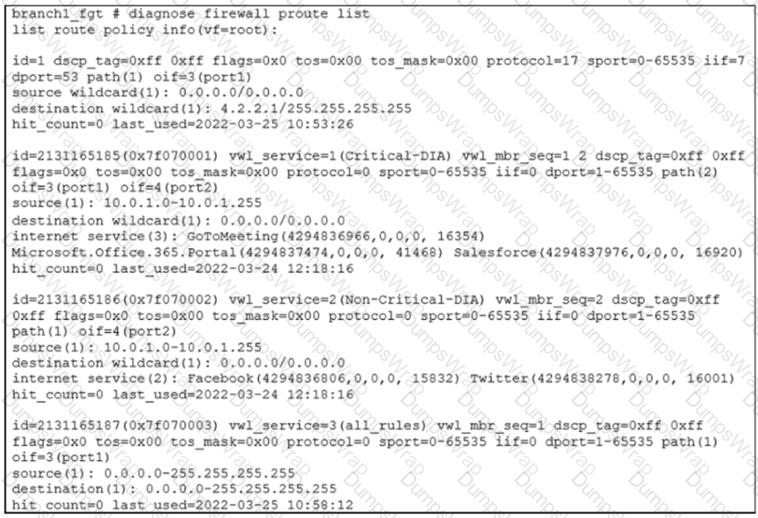
Based on the output, which two conclusions are true? (Choose two.)
What are two advantages of using an IPsec recommended template to configure an IPsec tunnel in a hub-and-spoke topology? (Choose two.)
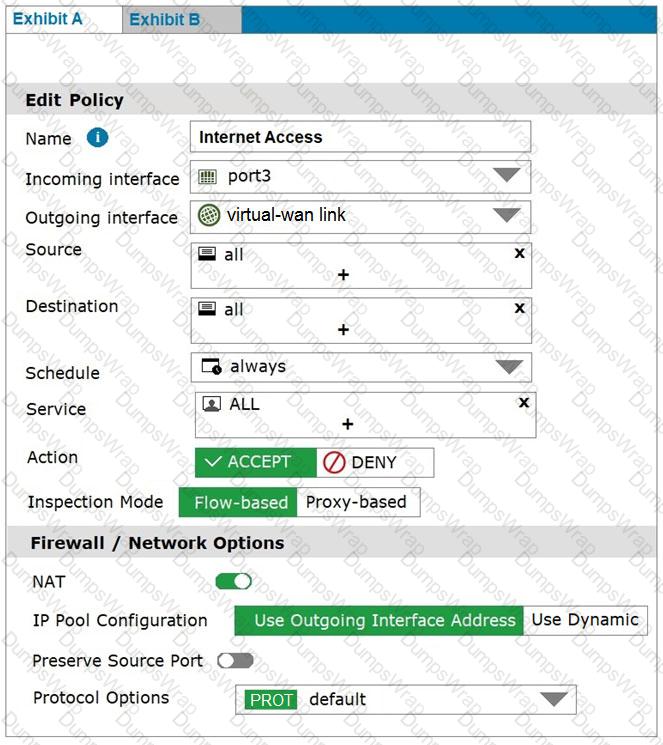
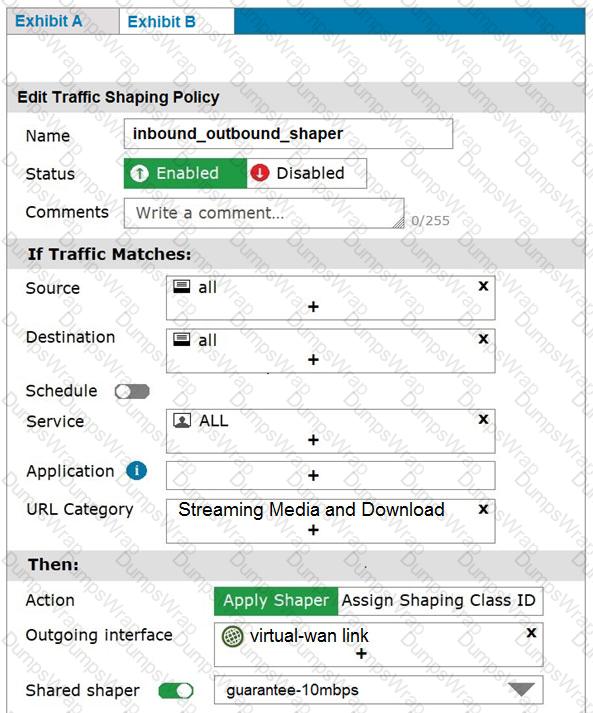
Exhibit A shows the firewall policy and exhibit B shows the traffic shaping policy.
The traffic shaping policy is being applied to all outbound traffic; however, inbound traffic is not being evaluated by the shaping policy.
Based on the exhibits, what configuration change must be made in which policy so that traffic shaping can be applied to inbound traffic?
Refer to the exhibits.
Exhibit A -
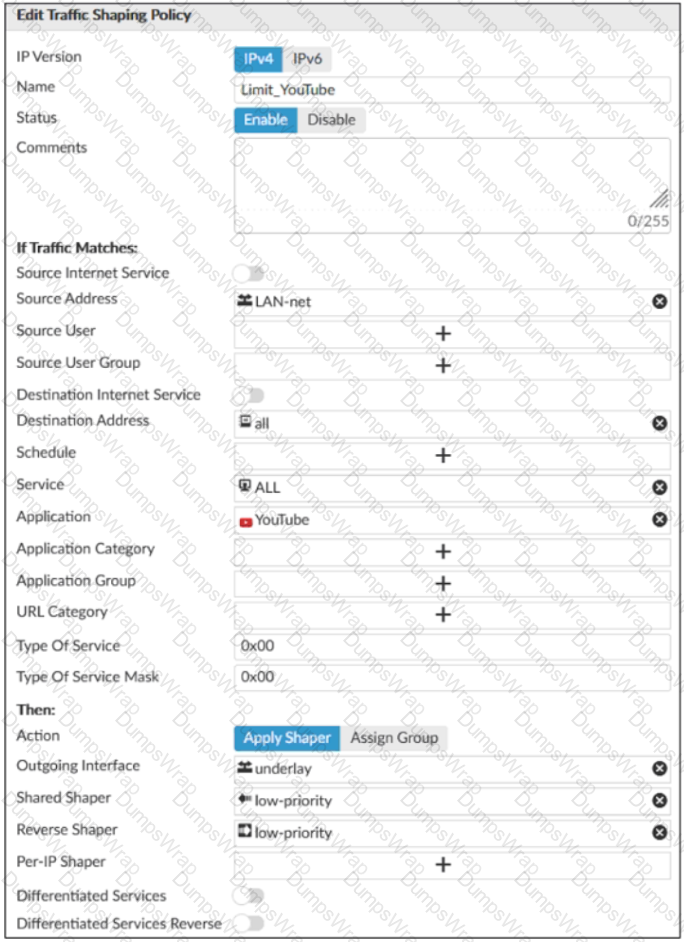
Exhibit B -
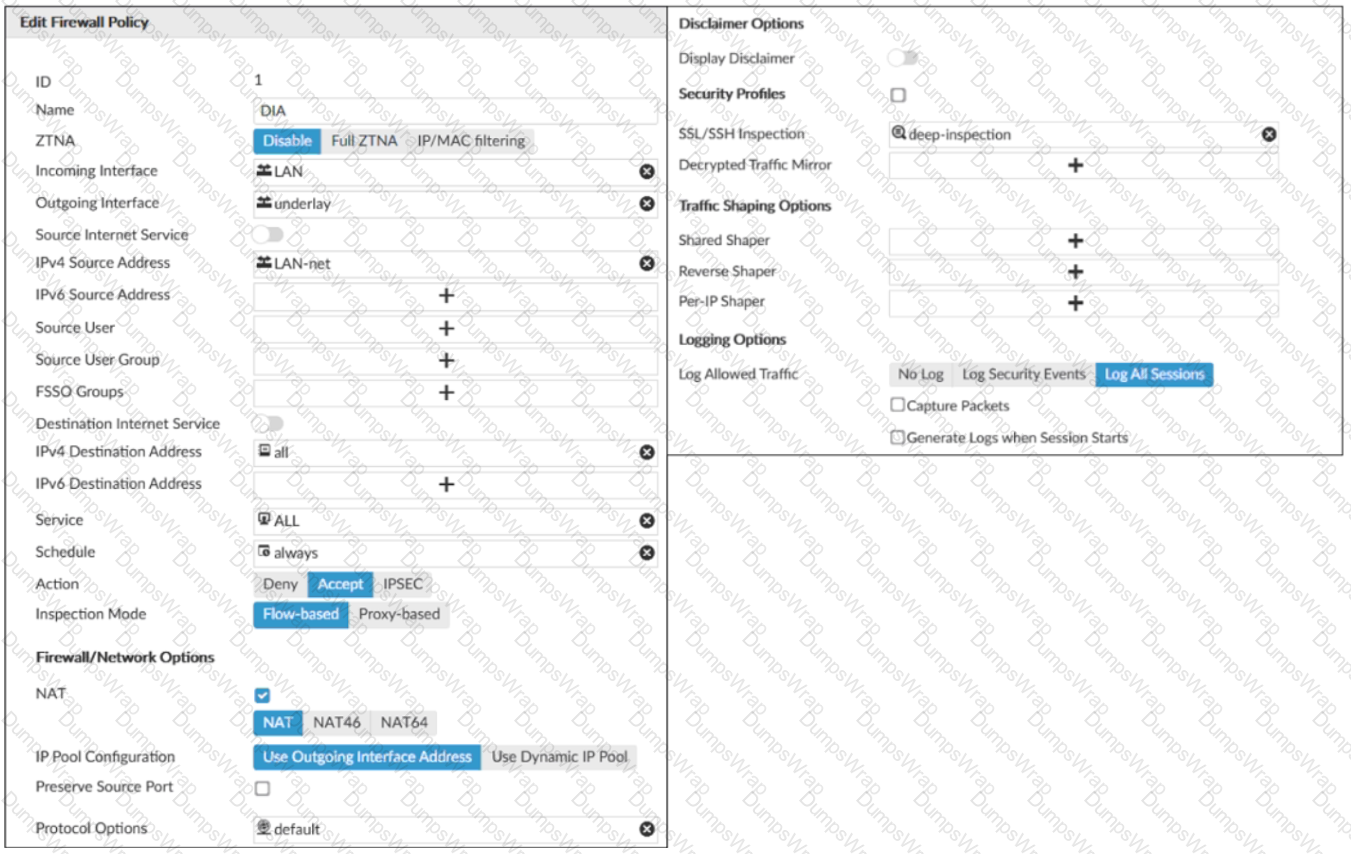
Exhibit A shows the traffic shaping policy and exhibit B shows the firewall policy.
The administrator wants FortiGate to limit the bandwidth used by YouTube. When testing, the administrator determines that FortiGate does not apply traffic shaping on YouTube traffic.
Based on the policies shown in the exhibits, what configuration change must be made so FortiGate performs traffic shaping on YouTube traffic?
Refer to the exhibit.
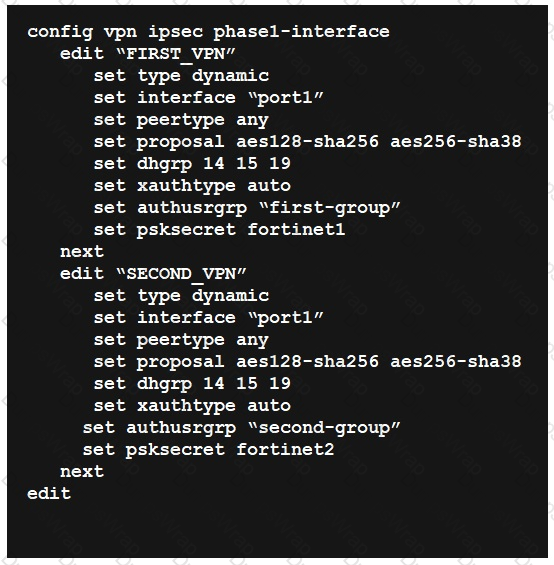
FortiGate has multiple dial-up VPN interfaces incoming on port1 that match only FIRST_VPN.
Which two configuration changes must be made to both IPsec VPN interfaces to allow incoming connections to match all possible IPsec dial-up interfaces? (Choose two.)
Refer to the exhibits.
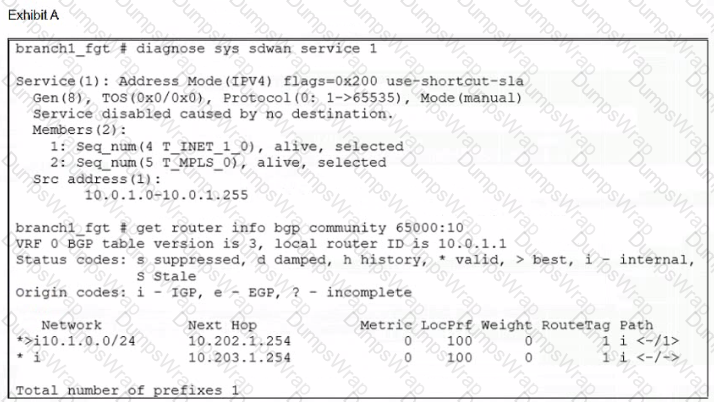
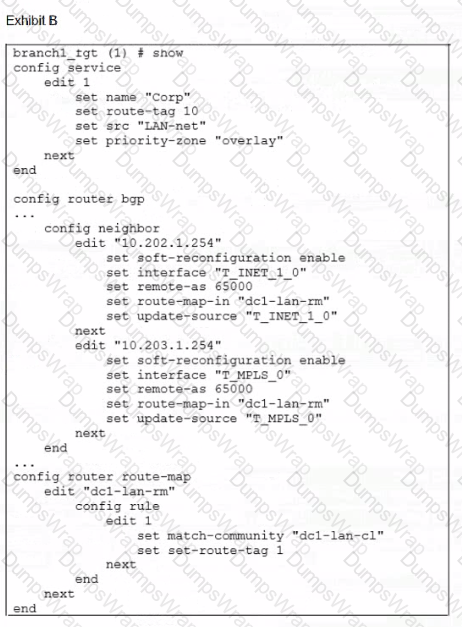
Exhibit A shows the SD-WAN rule status and the learned BGP routes with community 65000:10.
Exhibit B shows the SD-WAN rule configuration, the BGP neighbor configuration, and the route map configuration.
The administrator wants to steer corporate traffic using routes tags in the SD-WAN rule ID 1.
However, the administrator observes that the corporate traffic does not match the SD-WAN rule ID 1.
Based on the exhibits, which configuration change is required to fix issue?
Which diagnostic command can you use to show the member utilization statistics measured by performance SLAs for the last 10 minutes?
What are two benefits of using the Internet service database (ISDB) in an SD-WAN rule? (Choose two.)
Refer to the exhibit.
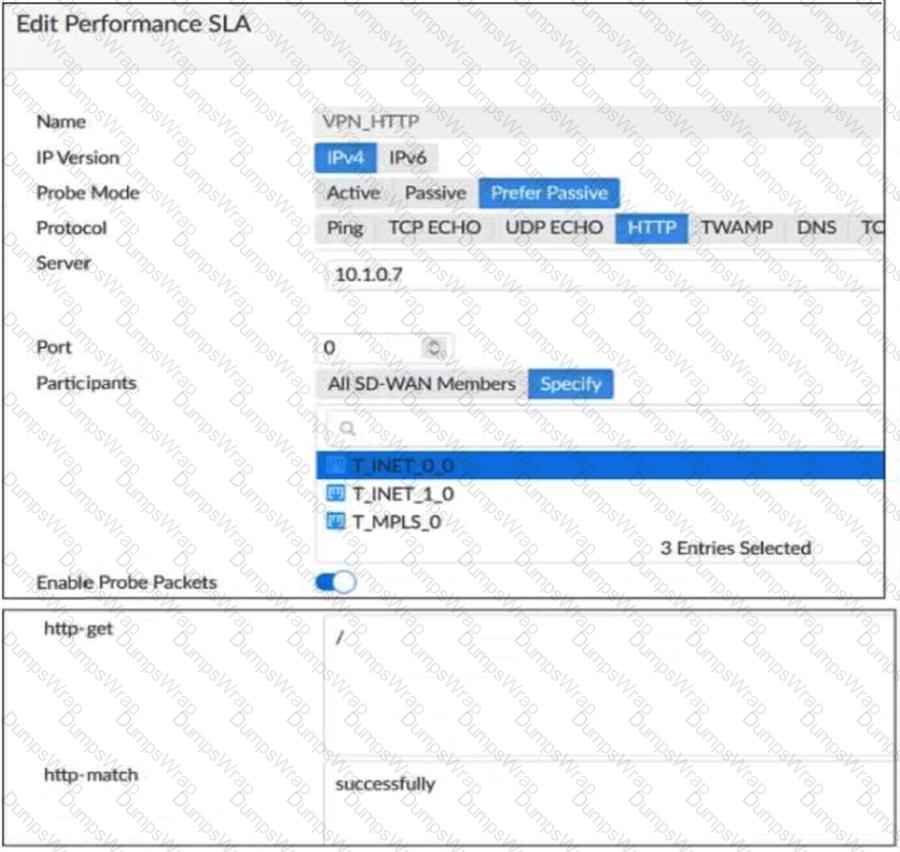
Based on the exhibit, which two statements are correct about the health of the selected members? (Choose two.)
Refer to the exhibit.
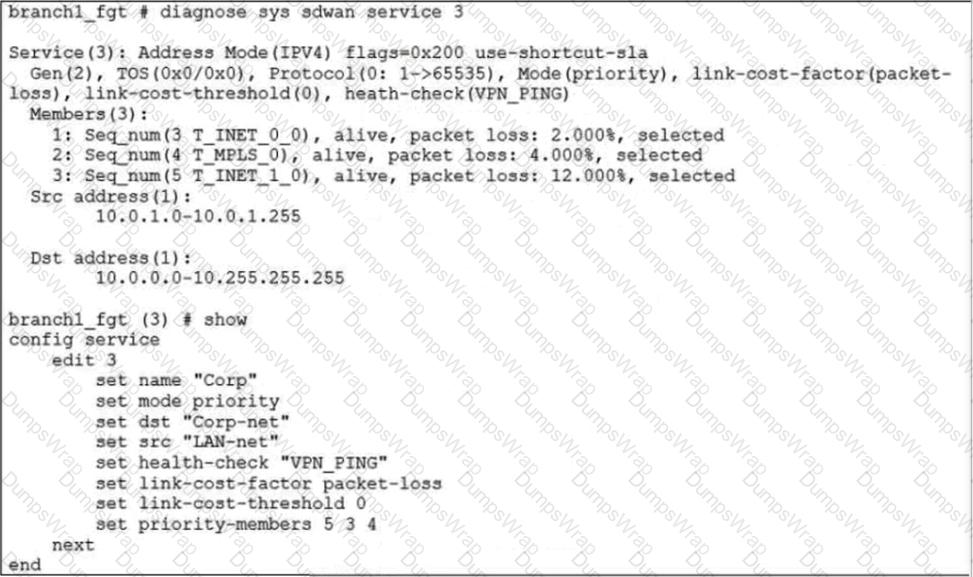
The exhibit shows the SD-WAN rule status and configuration.
Based on the exhibit, which change in the measured packet loss will make T_INET_1_0 the new preferred member?
Which diagnostic command can you use to show the configured SD-WAN zones and their assigned members?
Refer to the exhibit.
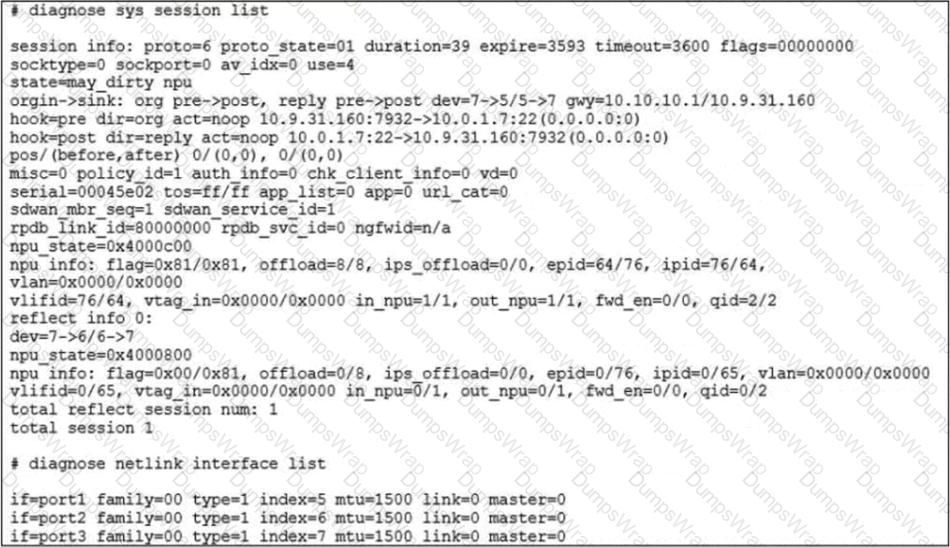
The exhibit shows the details of a session and the index numbers of some relevant interfaces on a FortiGate appliance that supports hardware offloading. Based on the information shown in the exhibits, which two statements about the session are true? (Choose two.)
Refer to the exhibit.
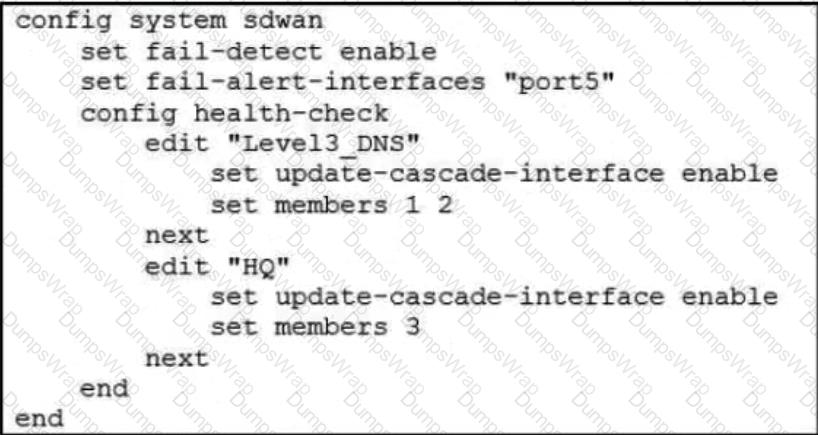
Based on the exhibit, which action does FortiGate take?
In a hub-and-spoke topology, what are two advantages of enabling ADVPN on the IPsec overlays? (Choose two.)
Refer to the exhibit.

Which statement about the role of the ADVPN device in handling traffic is true?
Which action fortigate performs on the traffic that is subject to a per-IP traffic shaper of 10 Mbps?

